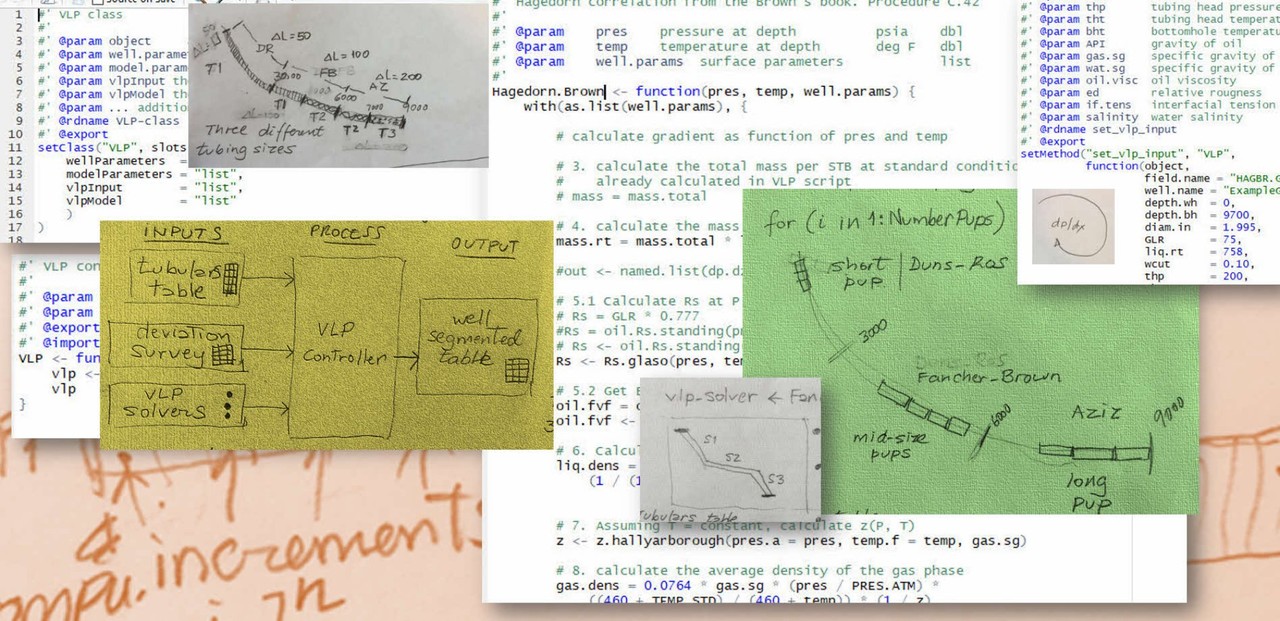
I just finished the design of a new R package for petroleum engineering that will run vertical lift performance (VLP) using the most used correlations in the industry; maybe I would be able to add on top a couple of mechanistic models.
The design contemplates the ability of applying different VLP correlations to multiple segments of the well. Picture this: applying Duns-Ros in the first 1/3 of the well, Hagedorn-Brown in the next 1/3, and mechanistic Azis in the last 1/3. It’s just an example. The well segment portions could be different and more than three, of course. This includes varying the delta-L used during the pressure gradient calculation to a custom-entered value (1’, 5’, 10’ 25’, 50 ft, etc.) to provide a more fine control over the solution. The thing is that we end up with VLP curves with slightly different slope or shape with the purpose of approximating the model as close as possible to the real behavior of the well. I don’t expect discontinuities between the VLP curves.
I am in search of some input of the Petroleum Production Engineering community before I start putting together the pieces (read R code, classes, methods and objects), and publish it to CRAN (the R comprehensive network).
As you know, R and RStudio are open-source, free to download and install. The VLP package in R will be published in GitHub for all, free to see and enhance it.
These are questions on the multi-segment VLP package:
In what scenarios you see as necessary and applicable the multiple VLP on a well? Should we limit the amount of VLP correlations to be applied to the well? Three VLPs? Five? Should the multi-segment VLP correlation include the option of having its own z-factor and oil/gas fluid properties correlations attached to it? What about the fluid heat transfer equation? Should there be a unique model for the whole well? Or should the fluid heat transfer be accompanying its VLP correlation? Would your company be willing to test internally the new multi-segmented VLP method?
Alfonso R. Reyes. Oil Gains Analytics. Houston, Texas
You can follow me via Twitter via fonzie@OilGains